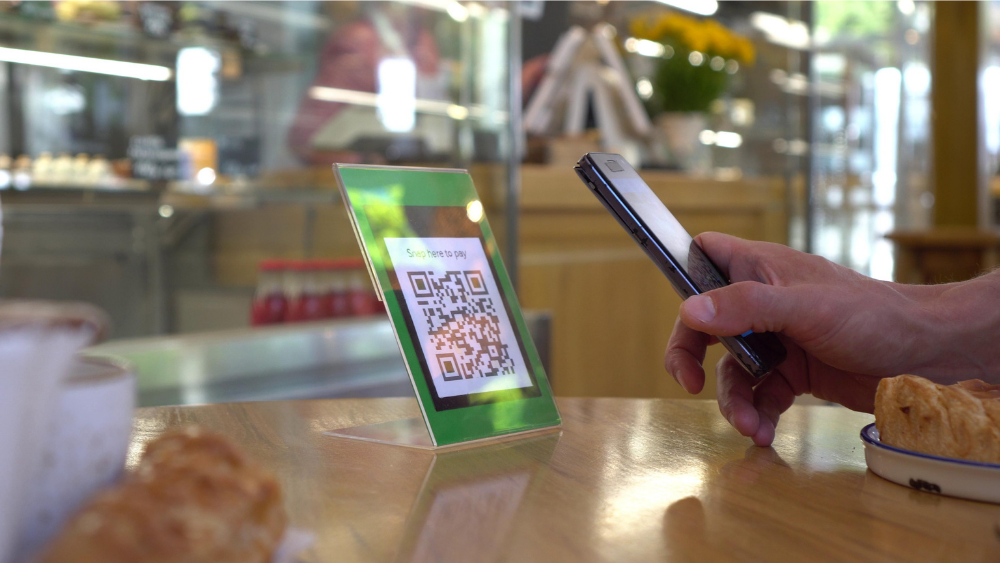Insights
INSIGHTS
All Topics
The best contactless fundraising options for charities
06 Aug 2024by Laura Stanley
We explore the world of contactless fundraising and highlight the best tools of the trade to get your charity more donations
The world of fundraising is changing. But this is nothing new.
Advances in payment technology, the advent of the social media donate button, and the general worldwide shift towards a cashless society all mean that charities not looking at fresh new ways of fundraising risk falling behind.
Fundraising works best when it is easy for donors to donate. Simplifying the process, reducing the number of steps it takes, and allowing people to donate in a way that is convenient for them can vastly increase the amount a charity raises for its cause.
It’s a trend that we’ve been seeing for a long time. According to the Charities Aid Foundation (CAF), there has been a sustained increase in cashless giving since March 2020, when the UK went into lockdown in response to rising COVID-19 numbers.
But it is also a trend that pre-exists the pandemic. A fifth of payments made in the UK in 2019 were contactless.
Here we run through some of the best (and simplest) contactless options for charities as they adapt their fundraising to the post-COVID-19 world.
QR Codes
QR codes are very helpful to charities looking to improve their fundraising efforts. Gone are the days where donors have to worry about having the right change in order to support a cause that resonates with them. With QR codes, people can donate as and when they want to, simply by scanning the code with their smartphone.
Scanning a code can greatly reduce the number of steps required for completing a donation. The codes can open a link to a website or landing page, or even take users to their online banking so they can donate directly. Instant payment platform BOPP, for example, uses Open Banking links so that when someone scans one of their QR codes, it opens their app, they check and authorise the payment, and that’s it – donation complete.
What’s more, QR codes are extremely versatile. You can place them on a bucket, a pamphlet, a poster, a business card, a T-shirt, or even on a cake topper. Wherever your audience is, a QR code can meet them right there.
Text-to-donate
Text-to-donate has been a huge boon for charities in recent years. It has come very common to see a ’TEXT [Insert Code here] to donate £10’ on high-profile fundraisers and advertisements, appearing on everything from Celebrity Bake Off to Children in Need. And in 2021, we’re generally dab hands at sending a text.
Being able to donate via mobile means charities are tapping into a large audience. According to Non-Profit Source, mobile devices account for 57% of all Internet traffic and a quarter of people donate to charities in this way.
Like QR codes, the text format can be embedded into larger campaigns, appearing on posters and banner ads, or in any content your organisation produces.
Text-to-donate is particularly good for encouraging one-off donations. In 2020, one-off donations rose by more than a quarter, with £10 donations being the most common.
Text donation services, such as Donr or InstaGiv, help charities to create a keyword related to their name or cause, providing them with a short, memorable number for donors to text and the donation is done in the time it takes a Love Island contestant to say ’I’ve got a text!’.
Text-to-donate allows charities to harness that giving energy at the time when their supporters are most willing to spend it. Once again, they don’t need cash or a card in order to give, just a phone, a number, and a SMS message.
Tap-and-donate
Contactless donation boxes, or tap-and-donate boxes, are very helpful services for in-person fundraising that do not necessitate the carrying of cash, but they do need a card or the activation of services like ApplePay on your smartphone.
There are many different ways for tapping to donate to work. Smaller charities may benefit from the use of card readers. There are many well-established options here, such as SumUp and Zettle, which are regularly used in lots of small businesses across the country. There are no rental costs, and both services have payment options that mean charities needn’t fear spending a lot of vital fundraising money on fancy technology.
The Big Issue Group is one such organisation that has experienced a lot of success with contactless payment systems and has reported huge increases in sales for its magazine sellers following a roll out of Zettle’s technology.
Animal charity Blue Cross used PayPal Here technology to give ‘pat and tap’ contactless devices to their fundraising dogs, placing them in jackets for them to wear while out driving attention for their cause.
Organisations can also use tap-to-donate on special podiums in places where the traditional donation box would be. Goodbox, for example, works like Zettle and SumUp, but is specially-designed for charities, providing them ’Tap-to-Give’ platforms that take out a designated amount with a quick tap of a contactless payment card.
Contactless donations offer both charities and their supporters plenty of options when it comes to fundraising. And with no cash required, even the Queen herself can donate. It’s a win-win.
Find out more about BOPP's contactless capabilities
BOPP are partnering with Charity Digital to provide a discount on their contactless payment services to charities and non-profits. Find out more by clicking above.
Laura Stanley
More on this topic
Recommended Products
Our Events
Charity Digital Academy
Our courses aim, in just three hours, to enhance soft skills and hard skills, boost your knowledge of finance and artificial intelligence, and supercharge your digital capabilities. Check out some of the incredible options by clicking here.

















